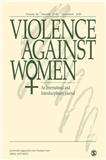安心交易
不成功退款,无后顾之忧,风险服务升级。
Violence against women (VAW), also known as gender-based violence[1] and sexual and gender-based violence (SGBV)[2] are violent acts primarily or exclusively committed against women and girls. Often considered a form of hate crime,[3] this type of violence is gender-based, meaning that the acts of violence are committed against women and girls expressly because they are female. The UN Declaration on the Elimination of Violence Against Women states, "violence against women is a manifestation of historically unequal power relations between men and women" and "violence against women is one of the crucial social mechanisms by which women are forced into a subordinate position compared with men."[4]Kofi Annan, Secretary-General of the United Nations, declared in a 2006 report posted on the United Nations Development Fund for Women (UNIFEM) website: Violence against women and girls is a problem of pandemic proportions. At least one out of every three women around the world has been beaten, coerced into sex, or otherwise abused in her lifetime with the abuser usually someone known to her.[5]Violence against women can fit into several broad categories. These include violence carried out by "individuals" as well as "states". Some of the forms of violence perpetrated by individuals are: rape, domestic violence, sexual harassment, reproductive coercion, female infanticide, prenatal sex selection, obstetric violence, and mob violence; as well as harmful customary or traditional practices such as honor killings, dowry violence, female genital mutilation, marriage by abduction and forced marriage. Some forms of violence are perpetrated or condoned by certain states[which?] such as war rape; sexual violence and sexual slavery during conflict; forced sterilization; forced abortion; violence by the police and authoritative personnel; stoning and flogging. Many forms of VAW, such as trafficking in women and forced prostitution are often perpetrated by organized criminal networks.[6]The World Health Organization (WHO), in its research on VAW, has analyzed and categorized the different forms of VAW occurring through all stages of life from before birth to old age.[7]In recent years, there has been a trend of approaching VAW at an international level through means such as conventions or, in the European Union, through directives (such as the directive against sexual harassment, and the directive against human trafficking)
对妇女的暴力(VAW),也称为基于性别的暴力[1]和基于性别的性暴力(SGBV)[2]是主要或完全针对妇女和女童的暴力行为。[3]通常被认为是仇恨犯罪的一种形式,这类暴力是基于性别的,这意味着暴力行为是针对妇女和女童的,因为她们是女性。联合国《消除对妇女的暴力行为宣言》指出,“对妇女的暴力行为是历史上男女权力关系不平等的表现”,“对妇女的暴力行为是迫使妇女与男子相比处于从属地位的重要社会机制之一”联合国秘书长科菲·安南在联合国妇女发展基金(妇发基金)网站2006年发布的一份报告中宣布:对妇女和女童的暴力是一个普遍存在的问题。世界上至少每三名女性中就有一名在她的一生中被殴打、强迫进行性行为,或者与施虐者(通常是她认识的人)发生过其他形式的虐待对妇女的暴力行为可以分为几个大类。这些包括“个人”和“国家”实施的暴力。个人实施的一些暴力形式包括:强奸、家庭暴力、性骚扰、生殖胁迫、杀害女婴、产前性别选择、产科暴力和暴民暴力;以及有害的习俗或传统做法,如荣誉谋杀、嫁妆暴力、切割女性生殖器、诱拐婚姻和强迫婚姻。某些国家实施或宽恕了某些形式的暴力[哪一种?例如战争强奸;冲突期间的性暴力和性奴役;强迫绝育;强制堕胎;警察和权威人员的暴力行为;石刑和鞭打。VAW的许多形式,如贩卖妇女和强迫卖淫,往往是由有组织犯罪网络进行的世界卫生组织(WHO)在其关于VAW的研究中,分析并分类了从出生前到老年的各个生命阶段发生的不同形式的VAW近年来,有一种趋势是在国际一级通过公约或在欧洲联盟通过指示(例如《反对性骚扰指示》和《反对贩运人口指示》)等手段接近《妇女地位法》

安心交易
不成功退款,无后顾之忧,风险服务升级。
合规备案认证机构
资质许可齐全,合规经营,用户权益有保障。
正刊保障
刊物在国家新闻出版署网可查,抵制假刊、增刊。
对公账户资金监管
交易均通过对公账户,资金安全有保障。01 选择服务并上传稿件 我们的学术顾问将根据您的需求推荐适合的服务
02 分配资深编辑和同行专家 根据您的服务方案和研究方向,为您分配资深编辑和同行专家
03 交付及反馈 每个环节的服务会在您审阅和确认后进行下一步,根据您的反馈和建议做调整
04 提升稿件质量 我们将基于您的反馈并平衡期刊的投稿要求,为您进一步优化稿件
05 提交投稿 出版专家将在您确认定稿后,为您整理并检查所有必须文件,协助您完成期刊投稿。
06 投稿跟进 及时查询稿件状态,协助您与期刊编辑沟通,根据审稿意见协助修正文章
07 拒稿支持 若期刊拒稿,您可通过拒稿咨询服务发掘稿件的改进方案,并获取365天无限次向同期刊或其他期刊的重投服务